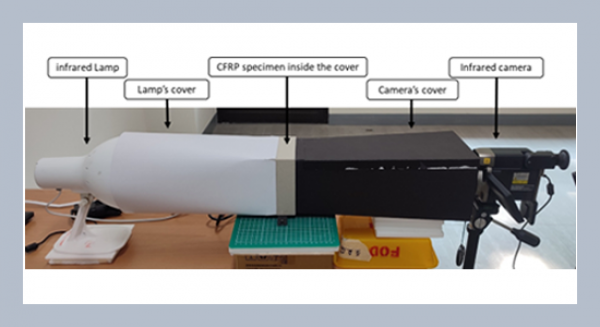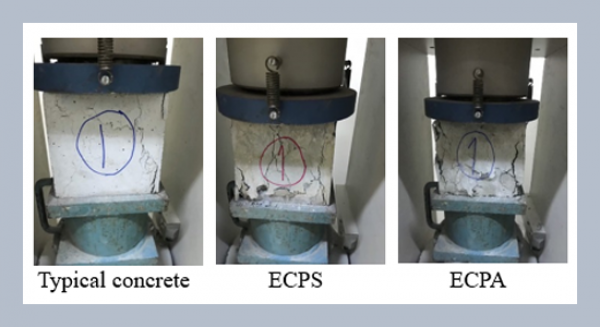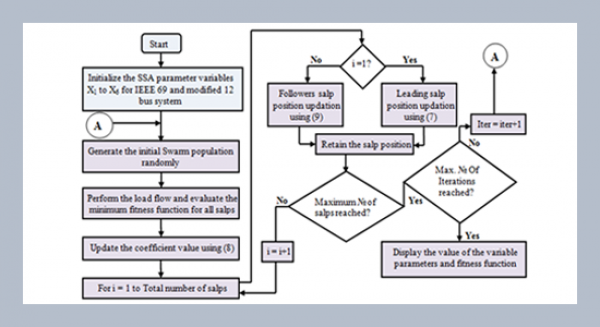REFERENCES
- Abdollahzadeh, S., Navimipour, N.J. 2016. Deployment strategies in the wireless sensor network: a comprehensive review, Computer Communications 91, 1–16. https://doi.org/10.1016/j.comcom.2016.06.003.
- Afsar, M.M., Tayarani-N, M.-H. 2014. Clustering in sensor networks: A literature survey, Journal of Network and Computer Applications 46, 198–226. https://doi.org/10.1016/j.jnca. 2014.09.005.
- Alotaibi, M. 2018. An enhanced symmetric cryptosystem and biometric-based anonymous user authentication and session key establishment scheme for WSN, IEEE Access, 6, 70072–70087.
- Anjum, F. 2010. Location dependent key management in sensor networks without using deployment knowledge, Wireless Netw., 16, 1587–1600.
- Annapurna, H., Siddappa, M. 2015. A technique for multi-tier key distribution for securing group communication in wsn, in: Emerging Research in Computing, Information, Communication and Applications, Springer, 273–279. https://doi.org/10.1007/978-81-322-2550-8_26.
- Bekara, C., Laurent-Maknavicius, M. 2009. Key management in wireless sensor networks, Wireless and Mobile Network Security: Security Basics, Security in On-the-shelf and Emerging Technologies, 613–648.
- Chakavarika, T.T., Gupta, S.K., Chaurasia, B.K. 2017. Energy efficient key distribution and management scheme in wireless sensor networks, Wireless Personal Communications 97, 1059–1070. https://doi.org/10.1007/s11277-017-4551-2.
- Chan, H., Perrig, A., Song, D. 2003. Random key predistribution schemes for sensor networks, Proc. IEEE Symp. Security and Privacy (SP ’03), 197–213.
- Choi, J., Bang, J., Kim, L.H., Ahn, M., Kwon, T. 2018. Location-based key management strong against insider threats in wireless sensor networks, IEEE Systems Journal.
- Erfani, S.H., Javadi, H.H., Rahmani, A.M. 2015. A dynamic key management scheme for dynamic wireless sensor networks, Security and Communication Networks 8, 1040–1049. https://doi.org/10.1002/sec.1058.
- Eschenauer, L., Gligor, V.D. 2002. A key-management scheme for distributed sensor networks, in Proc. ACM Conf. Computer and Communication Security, 41–47.
- Eschenauer, L., Gligor, V.D. 2002. A key-management scheme for distributed sensor networks, in Proc. ACM Conf. Computer and Communication Security, 41–47.
- Ferng, H.-W., Nurhakim, J., Horng, S.-J. 2014. Key management protocol with end-to-end data security and key revocation for a multi-bs wireless sensor network, Wireless Networks 20, 625–637. https://doi.org/10.1007/s11276-013-0627-4.
- Gandino, F., Ferrero, R., Montrucchio, B., Rebaudengo, M. 2016. Fast hierarchical key management scheme with transitory master key for wireless sensor networks, Filippo Gandino; Renato Ferrero; Bartolomeo Montrucchio; Maurizio Rebaudengo IEEE Internet of Things Journal, 3, 1334–1345.
- Gura, N., Patel, A., Wander, A., Eberle, H., Shantz, S. 2004. Comparing elliptic curve cryptography and RSA on 8-Bit CPUs, Proc. Sixth Int’l Workshop Cryptographic Hardware and Embedded Systems (CHES ’04), 119–132.
- Huang, J.-M., Yang, S.-B., Dai, C.-L. 2013. An efficient key management scheme for data-centric storage wireless sensor networks, IERI Procedia 4, 25–31. https://doi.org/10.1016/j. ieri.2013.11.005.
- Lee, J.C., Leung, V.C.M., Wong, K.H., Cao, J. 2007. Key management issues in wireless sensor networks: Current proposals and future developments, IEEE Wireless Communications, 14, 76–84.
- Merkle, R. 1978. Secure communication over insecure channels, Commun. ACM, 21, 294–299.
- Messai, M.-L., Seba, H., Aliouat, M. 2015. A new hierarchical key management scheme for secure clustering in wireless sensor networks, in: International Conference on Wired/Wireless Internet Communication, Springer, 411–424. https://doi.org/10.1007/978-3-319-22572-2_30.
- Nikooghadam, M., Amintoosi, H. 2020. Secure communication in CloudIoT through design of a lightweight authentication and session key agreement scheme, International Journal of Communication Systems, p. e4332.
- Seo, S., Bertino, E. 2013. Eliptic curve cryptography based certificateless hybrid signcryption scheme without pairing, CERIAS Technical Report 2013, https://www.cerias.purdue.edu/apps/reports and papers/. Seung-Hyun.
- Seo, S.-H., Won, J., Sultana, S., Bertino, E. 2015. Effective key management in dynamic wireless sensor networks, IEEE Transactions on Information Forensics and Security 10, 371–383. https://doi.org/10.1109/TIFS.2014.2375555.
- Seo, S.-H., Won, J., Sultana, S., Bertino, E. 2015. Effective key management in dynamic wireless sensor networks, IEEE Transactions on Information Forensics and Security, 10, 371–383.
- Shin, S., Kwon, T. 2019. A lightweight three-factor authentication and key agreement scheme in wireless sensor networks for smart homes, Sensors, 19, 2012.
- Simpl´ıcio-Jr., M.A., Barreto, P.S., Margi, C.B., Carvalho, T.C. 2010. A survey on key management mechanisms for distributed wireless sensor networks, Comput. Networks, 54, 2591–2612.
- Thevar, G.K.C., Rohini, G. 2017. Energy efficient geographical key management scheme for authentication in mobile wireless sensor networks, Wireless Networks 23, 1479–1489. https://doi.org/10.1007/s11276-016-1228-9.
- Wang, H., Li, Q. 2006. Efficient implementation of public key cryptosystems on mote sensors, Proc. Eighth Int’l Conf. Information and Comm. Security (ICICS ’06), 519–528.
- Zhang, J., Varadharajan, V. 2010. Wireless sensor network key management survey and taxonomy, J. Netw. Comput. Applications, 33, 63–75.
- Zhang, Y., Li, X., Liu, J., Yang, J., Cui, B. 2017. A secure hierarchical key management scheme in wireless sensor network, International Journal of Distributed Sensor Networks 8, 547471. https://doi.org/10.1155/2012/547471.
- Zhu, S., Setia, S., Jajodia, S. 2006. Leap+: Efficient security mechanisms for large-scale distributed sensor networks, ACM Trans. Sensor Netw., 2, 500–528.















